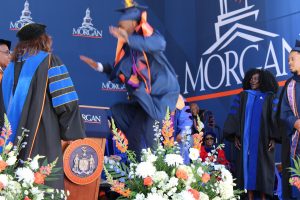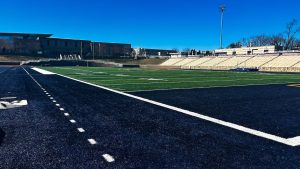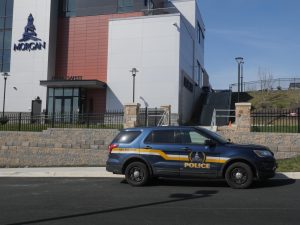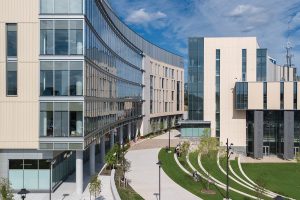A deep dive into Morgan State’s Patuxent Environmental and Aquatic Research Laboratory
Morgan State University’s Patuxent Environmental and Aquatic Research Laboratory (P.E.A.R.L.) offers paid summer internships to undergraduate and newly graduated students.
Photo courtesy of Morgan State University’s website
The Patuxent Environmental and Aquatic Research Laboratory (P.E.A.R.L.)
May 22, 2023
Morgan State University’s Patuxent Environmental and Aquatic Research Laboratory, also known as the P.E.A.R.L., is a field station facility that focuses on marine and environmental research.
“When people see P.E.A.R.L., they see this laboratory located on the Chesapeake Bay and I think a lot of them think ‘that’s just for marine biologists’ and that’s absolutely not the case … there’s something at the P.E.A.R.L for everybody,” Director of P.E.A.R.L. Scott Knoche said. “We do applied research here, so we’re trying to understand not only what’s happening in the natural world, but how that affects society.”
At the P.E.A.R.L., researchers and faculty members use state-of-the-art equipment among the main research programs: coastal ecology, aquaculture and genomics, environmental economics, and environmental education. The laboratory is located in St. Leonard, Maryland, which is about 80 miles south of Morgan State’s main campus.
“They [interns] receive, in my opinion, a wonderful experience working under P.E.A.R.L researchers, and that internship program culminates in presenting their findings at the [P.E.A.R.L.] Summer Research Symposium,” said Knoche.
P.E.A.R.L. offers 10-week paid internships every summer to undergraduate and recently graduated students who are interested in learning more about the environment. The internship includes housing and a $6,000 stipend for living expenses.
Amanda Bevans started as an intern at the P.E.A.R.L. in 2021 and now, she is a doctoral student bioenvironmental science studying estuarine and coastal management in the Bioenvironmental Science program at the P.E.A.R.L. Bevans’ dissertation focuses on the Chesapeake Bay’s ecosystem and the blue crab population.
“The main part of our kind of study is fieldwork. The blue crab survey is the study that is conducted to collect the blue crab data,” Bevans said. “[The data] captures these long-term dynamics because you have 50 years of data but, of course, to continue that data we have to go out every year. With field work, we’re catching blue crabs, we’re counting blue crabs, we’re measuring blue crabs. That was a big part of the internship.”
P.E.A.R.L. interns gain hands-on experience conducting marine and environmental science research in laboratories and with natural wildlife. Researchers do most of their analysis for aquaculture in the shellfish hatchery.
“Our main goal of the P.E.A.R.L. aquaculture team is to spawn oysters and clams for the aquaculture industry,” said Brittany Wolfe-Bryant, hatchery manager and a mentor of the P.E.A.R.L. summer internship program.
Researchers also study aquaculture and genomics of oysters at St. Leonard’s creek. Water from the Chesapeake Bay and Patuxent river flows into the creek, making it a suitable area to study oysters.
Ming Liu, oyster economics researcher at the P.E.A.R.L., is well-versed in the obstacles in the world of aquaculture.
“In Maryland, the challenge for the oyster aquaculture is the low salinity,” Liu said. “The oysters grow slowly in the low salinity waters and, in some heavy rainfall years, the low salinity will cause a lot of mortality for the oysters.”
P.E.A.R.L. intends to initiate their first interdisciplinary degree program, which will award a bachelor of science in coastal science and policy.
“It will focus on natural sciences like biology, chemistry, and geology, as well as social sciences like economic policy,” said Amanda Knobloch, the education coordinator at P.E.A.R.L.
Knobloch looks forward to the possibility of a degree-awarding aquatic studies program at Morgan. According to Knobloch, the higher degree program is scheduled to launch Fall 2023.











